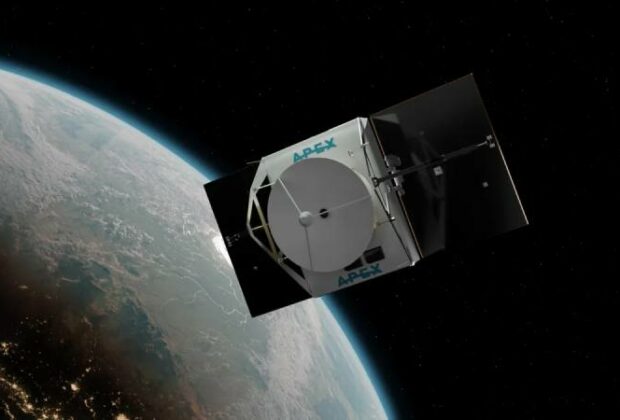After being launched on March 4, spacecraft maker Apex reports that its first satellite is still alive and thriving.
The Aries SN1 spacecraft, one of 53 payloads launched on SpaceX’s Transporter-10 rideshare mission from Vandenberg Space Force Base in California, has been successfully operated by the Los Angeles-based business.
In an interview on March 5, Apex CEO Ian Cinnamon reported that the spacecraft’s commissioning, which took place approximately 70 minutes after liftoff, went smoothly. He stated, “Everybody hopes for everything being perfectly nominal,” he said. “There’s always hiccups that occur, but I think our team was able to get through everything very quickly.”
According to him, the business created software for the spacecraft that would enable it to perform as many autonomous tasks as possible, including as self-orientation, power generation through solar array deployment, and telemetry transmission via a UHF beacon.
“It took about 10 minutes to go through that full autonomous sequence, when previously we budgeted 30 minutes or even an hour, so we’re very impressed with that performance,” he stated. The sole trouble arose later, when controllers moved to a higher-bandwidth S-band communications link. He attributed this to an unidentified ground issue rather than a spacecraft malfunction, which the business has subsequently fixed.
He said, “We’re really happy to be able to complete the commissioning so soon.” Now, the corporation is using the spacecraft as an on-orbit software development testbed in addition to doing different “stress tests” on it.
Apex intended to deploy Aries SN1 as a mission dedicated to technological demonstration only. But the business signed up a number of clients to have payloads flown on the spacecraft, including three “major defence primes,” according to Cinnamon, and more payloads the company chose not to reveal. According to him, such clients are carrying out space domain awareness, communications, and edge computing payloads. Additionally, Apex’s spacecraft is equipped with a “selfie camera” payload that allows it to take pictures of itself with Earth in the background.
He added that each of them is paying Apex to fly the payloads, saying, “We wanted to go to strategic partners and future customers” and offer them a flight opportunity. “Then, if you like what you see, we can keep cooperating.”
The firm claims that the one-year timeframe from a clean sheet design for Aries to launching the first spacecraft is the fastest development time for that size of satellite he is aware of. The company obtained a $7.5 million seed round of funding in October 2022 and more than $50 million altogether. Aries is a 100 kg spacecraft bus that belongs to the ESPA class and has the capacity to carry an extra 100 kg of payload.
According to Cinnamon, components for three more Aries spacecraft are on available, and the second spacecraft is presently being constructed in a clean room. The business anticipates moving into a bigger plant in Los Angeles later this year, with long-term plans to mass-manufacture Aries and larger satellite buses.








